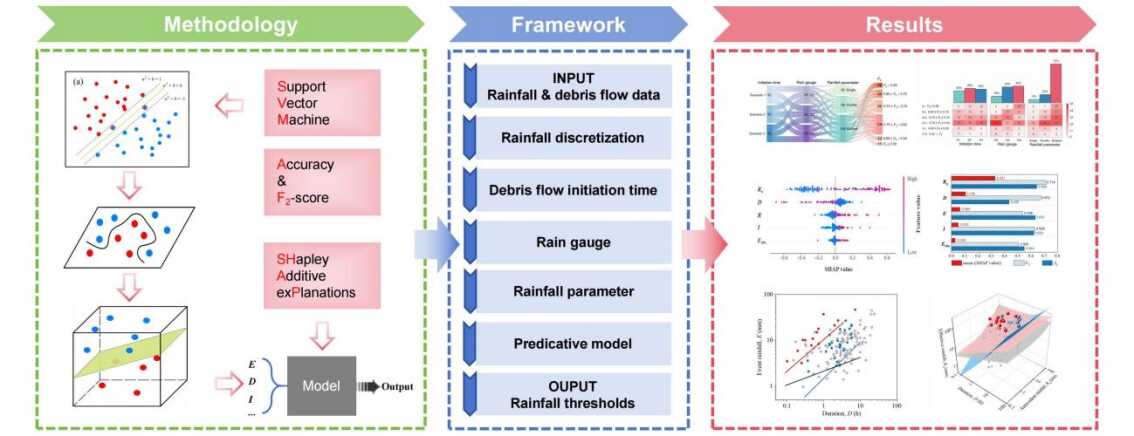The frequency of debris flow is expected to increase in response to intensification of the hydrological cycle caused by global warming. Accurately determining critical rainfall conditions that initiate debris flows (rainfall thresholds) is crucial for effective early warning systems. However, traditional methods often suffer from errors due to subjective parameter selection and inconsistent data quality, making them inadequate for practical early warning applications. Moreover, the sources of errors are typically difficult to trace or interpret.
To address those challenge, a research team led by Prof. GUO Xiaojun from the Institute of Mountain Hazards and Environment, Chinese Academy of Sciences has innovatively applied artificial intelligence (AI) methods to study the uncertainty of rainfall thresholds for debris flows in small catchments. The team employed a Nonlinear Gaussian Kernel Support Vector Machine (NGK-SVM) to identify optimal predictive parameters and modeling processes, overcoming the limitations of traditional statistical methods in capturing the relationship between rainfall and debris flows. Additionally, the SHapley Additive exPlanations (SHAP) provided a transparent and quantitative understanding of the contribution of each rainfall parameter to prediction outcomes, thereby effectively addressing the ‘black box’ problem of AI applications.
This uncertainty assessment framework was applied to the Jiangjia Gully, a well-studied debris-flow-prone area in the Xiaojiang River Basin of Southwest China. Based on rainfall and debris flow monitoring data, the team systematically evaluated the influence of key factors—such as debris flow initiation time, rain gauge selection, and rainfall parameters—on threshold accuracy. And the parameters combination including antecedent rainfall, triggering rainfall, and rainfall duration was utilized to establish the most effective thresholds.
By leveraging AI techniques, this study clarifies the uncertainties in parameter selection and advances the understanding of debris flow formation mechanisms. Not only does it improve the accuracy and reliability of rainfall thresholds for debris flows, but it also provides a methodological foundation for optimizing early warning models, thereby enhancing disaster prevention and mitigation capabilities in mountainous regions.
The research was supported by the National Natural Science Foundation of China. The findings were have been published in the Journal of Hydrology, under the title “Rainfall thresholds of debris flows built with assistance of artificial intelligence in a small catchment”.
First author: Zhang Siling, and corresponding author: Dr. Guo Xiaojun.
https://www.sciencedirect.com/science/article/abs/pii/S0022169425007784

(Image by GUO Xiaojun)
